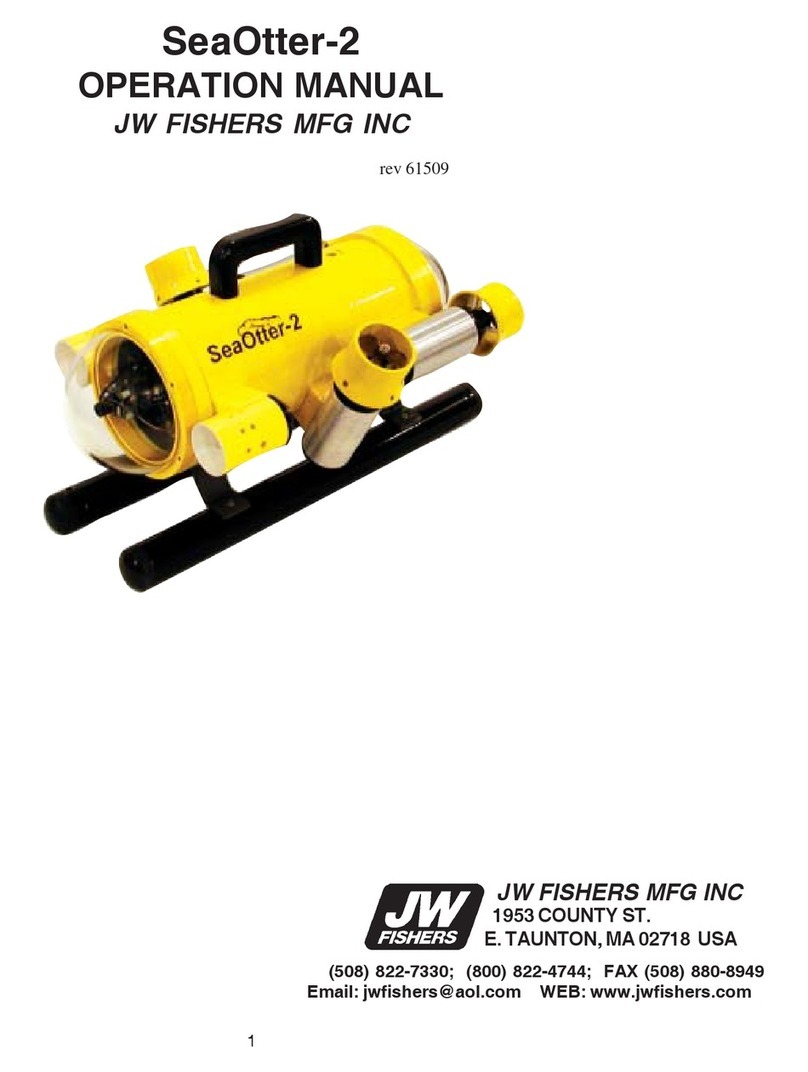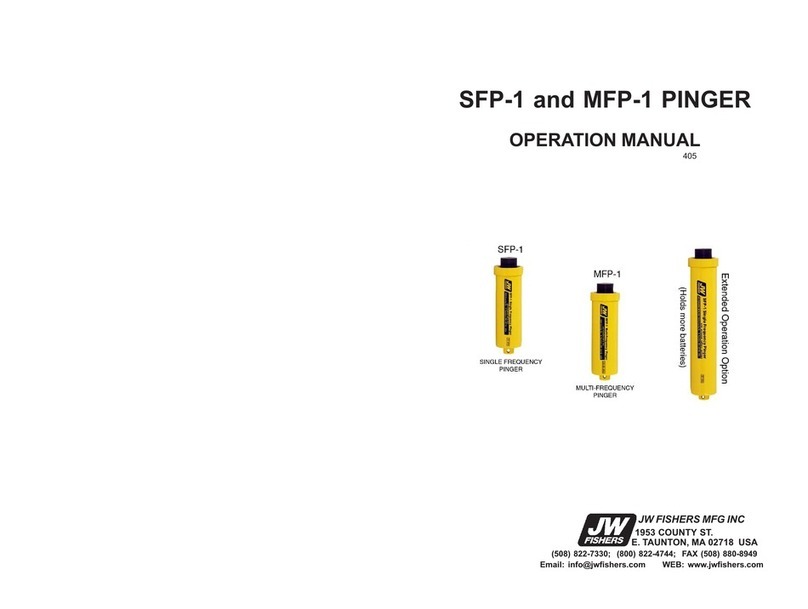
6
PROTON 4 DETECTION RANGES CHART
OBJECT NEAR RANGE FAR RANGE
1 gal can .......................................................................................................... 2 gamma 12'
5 gal can .......................................................................................................... 2 gamma 18'
55 gal can ........................................................................................................ 2 gamma 45'
Sm. Plane ....................................... 25 gamma at 20' .................................... 2 gamma at 50'
1 ton iron ........................................ 40 gamma at 30' .................................... 2 gamma at 80'
6" pipeline ...................................... 200 gamma at 20' ................................... 2 gamma at 100'
12' pipeline .................................... 350 gamma at 20' ................................... 2 gamma at 175'
Lg. anchor ..................................... 500 gamma at 50' ................................... 2 gamma at 200'
Med. ship ..................................... 1500 gamma at 100' ................................. 2 gamma a 1000'
Lg. ship ........................................ 2000 gamma at 100' ................................. 2 gamma at 1500'
The above chart shows the Proton 4 approximate detection range for different targets. The Proton 4 has a
sensitivity of one gamma; that is, it will detect a change of one gamma. Each one gamma change will change
the digital readout one digit.
CHART (above) EXAMPLE:
As the Proton 4 fish approaches a small plane, you can expect a one gamma change at 65-75' (the digital
readout would change one digit, ie: from 48,240 to 48,239). At 50' distance, another one gamma change
would take place (ie: 48,238 on readout). As the fish gets closer, the readout continues to decrement. At
20', you can expect the readout to be at 48,215 (total change of 25 gamma). As the fish passes next to the
plane the digital readout could be several hundred digits lower. If the target was 1 ton of iron, the readout could
show a change of 2,000. As the fish goes past the target, the readout would walk back to normal (48,240) in
reverse of the above sequence.
As a target is approached, the gamma reading can change up (increment) or down (decrement) depending
on what is happening to the magnetic field in the area. It is not unusual, when making many passes in different
directions over a target, to find some passes incrementing the readout number and other passes decre-
menting the number. In most cases, when you approach a target, the gamma number will drop as shown in
the example above.
MAGNETIC DEVIATION CHART (next page):
The chart on the next page is a magnetic deviation chart that shows the approximate amount of magnetic
deviation, or change, that could be expected for different size iron targets at different distances. The chart
is used to determine the distance between grid lines (boat passes) when searching for a known target.
It is desirable to set the grid distances to have at a minimum of a 10 gamma (10nT) change in the mag-
netometer readout when the target is located. Some operators set the grid pattern distances to insure a
minimum of a 20 g change to be sure they do not miss the target.
The chart assumes that the mag is being towed a few meters off the bottom. If the mag is being towed 10
meters off the bottom, then the grid lines must be much closer than the chart indicates. The smaller the
target, the closer the mag must be towed to the bottom.
An actual example of a search pattern that was set up:
A 6.5 ton anchor with 9 shots (total weight was 37 ton) was lost in a river. Because of it’s value (a must
find) a grid pattern was set up to insure a minimum of a 20 g readout change when the mag went past the
target.
GAMMA CHANGE GAMMA CHANGE
(up or down) (up or down)





























